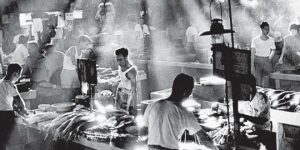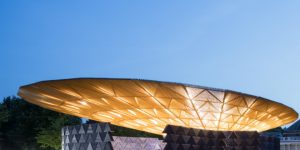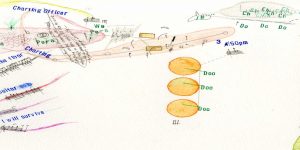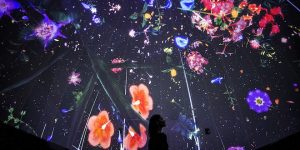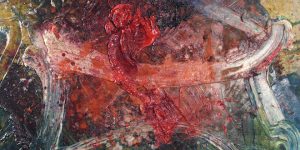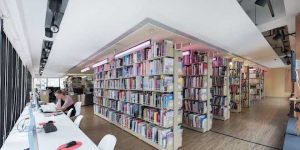We’ll Never Be Royals: ‘Joseon Korea: Court Treasures and City Life’ at Asian Civilisations Museum in Singapore
Don your hwarots and jump back in time to witness life in Joseon — the definitive Korean dynasty — and its everlasting spiritual, intellectual and aesthetic values that formed the bedrock for modern Korea, at the Asian Civilisations Museum.

Six-fold Screen of the Sun, Moon and Five Peaks. Image courtesy National Palace Museum
“Fans of K-Culture will not find this showcase unfamiliar,” said Asian Civilisations Museum (ACM) Director Kennie Ting, “as many of the stories and treasures we are showing in this exhibition have inspired Korea’s popular culture, from period drama series to contemporary arts and aesthetics, and even fashion.”
If your life is governed by the ebb, flow and impulses of K-Wave, particularly so if one is a fan of the recent Gong Yoo-starred TVN hit series ‘Goblin’, featuring an immortal man originating from a fictive Goryeo dynasty in full melodramatic, end-game meltdown mode, which incidentally is the preceding period before Joseon, then you’ll feel right at home in ACM’s latest blockbuster exhibition, ‘Joseon Korea: Court Treasures and City Life’. For those unaffected by South Korea’s effervescent pop cultural buzz — despite the museum’s enthusiastic overtures at calling out “fans of K-Wave” a number of times at the preview — you don’t want to miss this, as the sheer breadth of the show and the artefacts on display offer a rare look into a dynasty that spanned ancient to pre-modern times, and one whose influences have formed the bedrock of its national ideology today.

Bridal Robe (back). Image courtesy National Museum of Korea
‘Joseon Korea: Court Treasures and City Life’ is the result of a three-year collaborative effort with the National Museum of Korea and the National Palace Museum of Korea. It is the largest showcase ACM has undertaken to date, with more than 150 artefacts and treasures on show. The big show also represents ACM’s continued commitment to, in Director Ting’s words, “partnering the best museums in the world to bring art, culture and heritage to Singapore, for Singaporeans. ”
The sprawling show is divided into six sections, opening chronologically at the end of the Goryeo period in transition to the Joseon dynasty, and then segregated into sections ranging from royal and court culture, proletariat life, nature and religion, to the Joseon influencers: the aristocratic class yangban. A common thread through it all is a deep-seated belief in neo-confucianism, and its major influence in the politics and culture of the Korean people. Aesthetics and morality were in rigid deference to the the contours of the state ideology — values which were espoused and appreciated by arbiters of taste and social convention: royalty and top elites — that trickled down to all segments of Korean society, with an austere sense of the aesthetic, compliance to societal structures, filial piety, loyalty, etiquette and more.

Landscape of Segeomjeong Pavilion. Image courtesy National Museum of Korea
Artefacts on display, in fixtures and vitrines that impressively, incorporated the Joseon aesthetic, range from robes to paintings to painted screens and ornamental fans to daily paraphernalia like norigae and bojajis, and each and every one is painstakingly dusted off to reveal its provenance and backstory, as well as its associated tensions. Also on display, interestingly — symptomatic to the prevailing beliefs — are various commissioned full-body portraits of aristocracy and top civil servants that, unlike their Western counterparts, are not visually baroque and opulent in their pomp, but rather of a deep importance placed in the accurate portrayal of their inner state of mind, even in painted form (on a silk substrate, no less). Curator Kan Shuyi during the tour, dropped anecdotes of painting subjects’ profound dismay at perceived inaccurate depictions.
Topping off the historical retrospective is an installation from award-winning South Korean artist Ran Hwang, ‘Becoming Again; Coming Together’, a contemporary interpretation of traditional Korean cultural motifs. It is her largest single mixed-media installation to date. Made of pins and thread pushed through a seven-metre wide plexiglass, the installation is accompanied by a video projection incorporating traditional music performed with Joseon-era instruments.

Ran Hwang, ‘Becoming Again; Coming Together’, 2017. Image courtesy Asian Civilisations Museum
Much like a good Korean drama, ‘Joseon Korea: Court Treasures and City Life’ is transformative, earnest and rich in academia and as well, sublime moments, if one looks close enough. (And yes, it is also the perfect salve for your K-Wave and ‘Goblin’-related post-Goryeo withdrawal symptoms.)
‘Joseon Korea: Court Treasures and City Life’ exhibition runs from 22 April to 23 July 2017 at the Asian Civilisations Museum.
This article was originally published in Art Republik.




